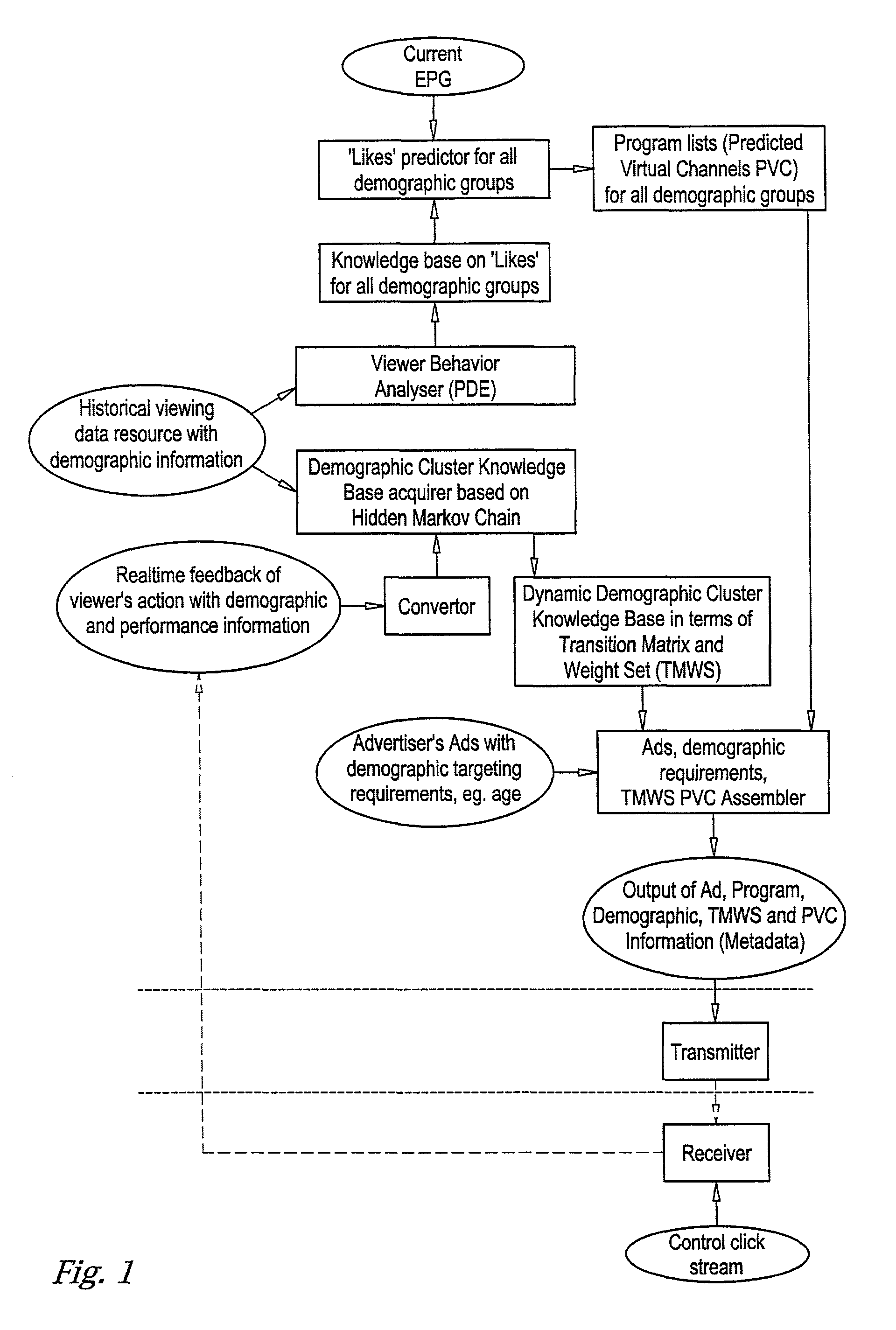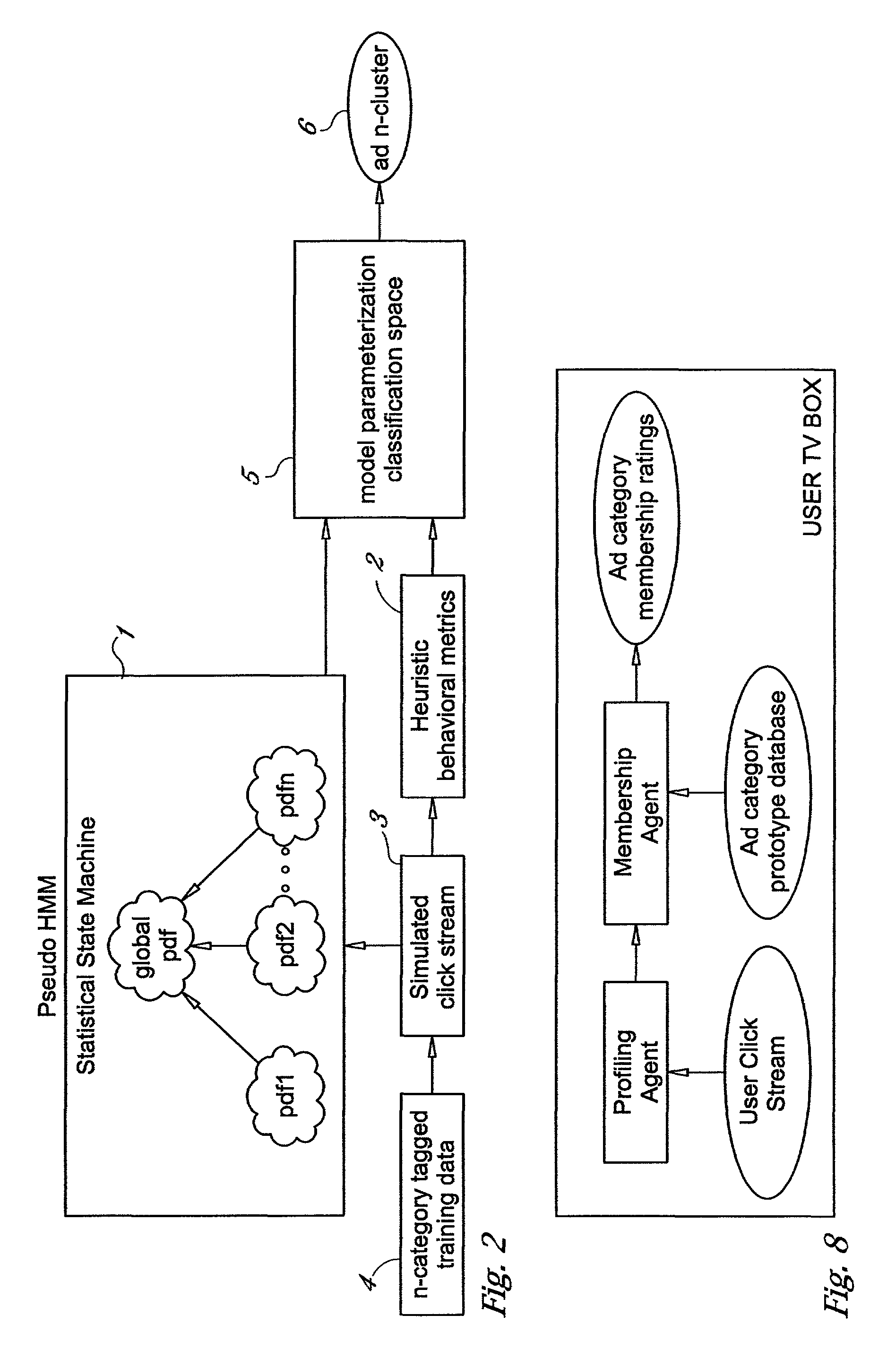System, method, and software application for targeted advertising via behavioral model clustering, and preference programming based on behavioral model clusters
a behavioral model and clustering technology, applied in the field of interactive television programming, can solve the problems of inability to predict user preferences based on sophisticated content and temporal relationships, inability to learn which metrics best, and inability to accurately predict user preferences, etc., to achieve accurate program or ad program preference determination, accurate relative preference metric, and higher weighting
- Summary
- Abstract
- Description
- Claims
- Application Information
AI Technical Summary
Benefits of technology
Problems solved by technology
Method used
Image
Examples
example 1
[0212]Find the top 5 most likely channels that complete a non-surfing viewing sequence, given the previously visited channels 30 and 40, the query constraints are[0213]QueryFunction=top_n=5, StateType=ChannelSequ, sequStateIDs=[30,40], LengthValue=null.
[0214]If channels 43, 58, and 60 were the most likely to complete the sequence, and their probabilities are 80, 10, 20 and percent respectively, the query result would be:[0215][(43,80), (58,10), (60,20), null, null].
example 2
[0216]Find the top 5 most likely channels that complete a surfing sequence three channels in length, given the previously visited channels 30 and 40, the query constraints are[0217]QueryFunction=top_n=5, StateType=SurfChannelSequ, sequStateIDs=[30,40], LengthValue=3.
[0218]If only channel 43 was the most likely to complete a surfing sequence three channels in length, and its probability is 80, the query result would be[0219][(43,80), null, null, null, null].
example 3
[0220]Out of all sequences of at least 4 programs, find the probability of watching the following three programs sequentially—Friends, Frasier, and Seinfeld (assuming they were chronologically concurrent or consecutive).[0221]QueryFunction=mostLikely, StateType=TitleSequ, fromStateIDs=[“Friends”, “Seinfeld”, “Frasier”], LengthValue=4.
[0222]A typical query result if these query constraints were observed in 20% of all sequences with LengthValue at least equal to 4, is [20].
[0223]In each of these examples, the channel, or sequence probabilities are calculated by simply counting the number of times a query satisfying state was visited, out of the total number of similarly constrained records. A more complete model of behavioral sequences additionally includes single transition information to statistically infer the most likely permutation. The novel sequence modeling method set forth employs the ‘states-visited’ model information, above, to infer observed combinations, and BM state tran...
PUM
 Login to View More
Login to View More Abstract
Description
Claims
Application Information
 Login to View More
Login to View More - R&D
- Intellectual Property
- Life Sciences
- Materials
- Tech Scout
- Unparalleled Data Quality
- Higher Quality Content
- 60% Fewer Hallucinations
Browse by: Latest US Patents, China's latest patents, Technical Efficacy Thesaurus, Application Domain, Technology Topic, Popular Technical Reports.
© 2025 PatSnap. All rights reserved.Legal|Privacy policy|Modern Slavery Act Transparency Statement|Sitemap|About US| Contact US: help@patsnap.com



